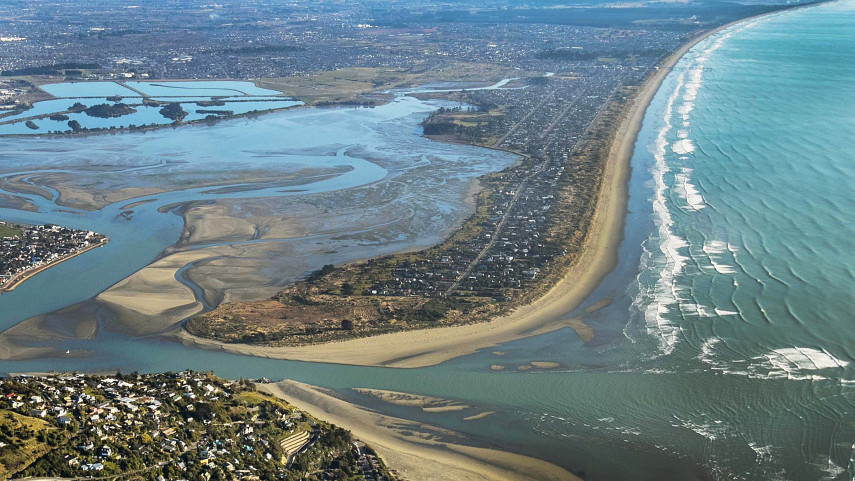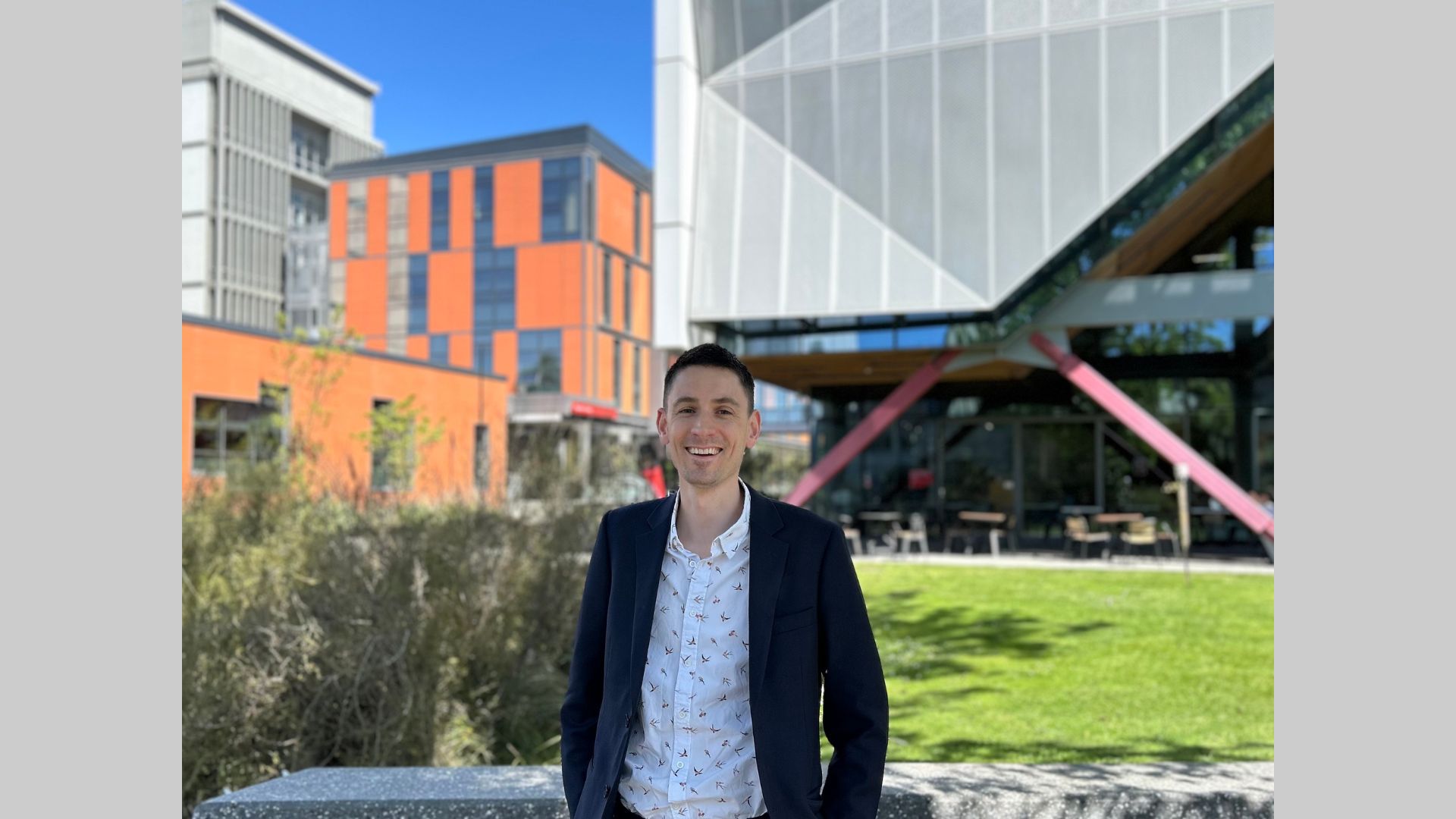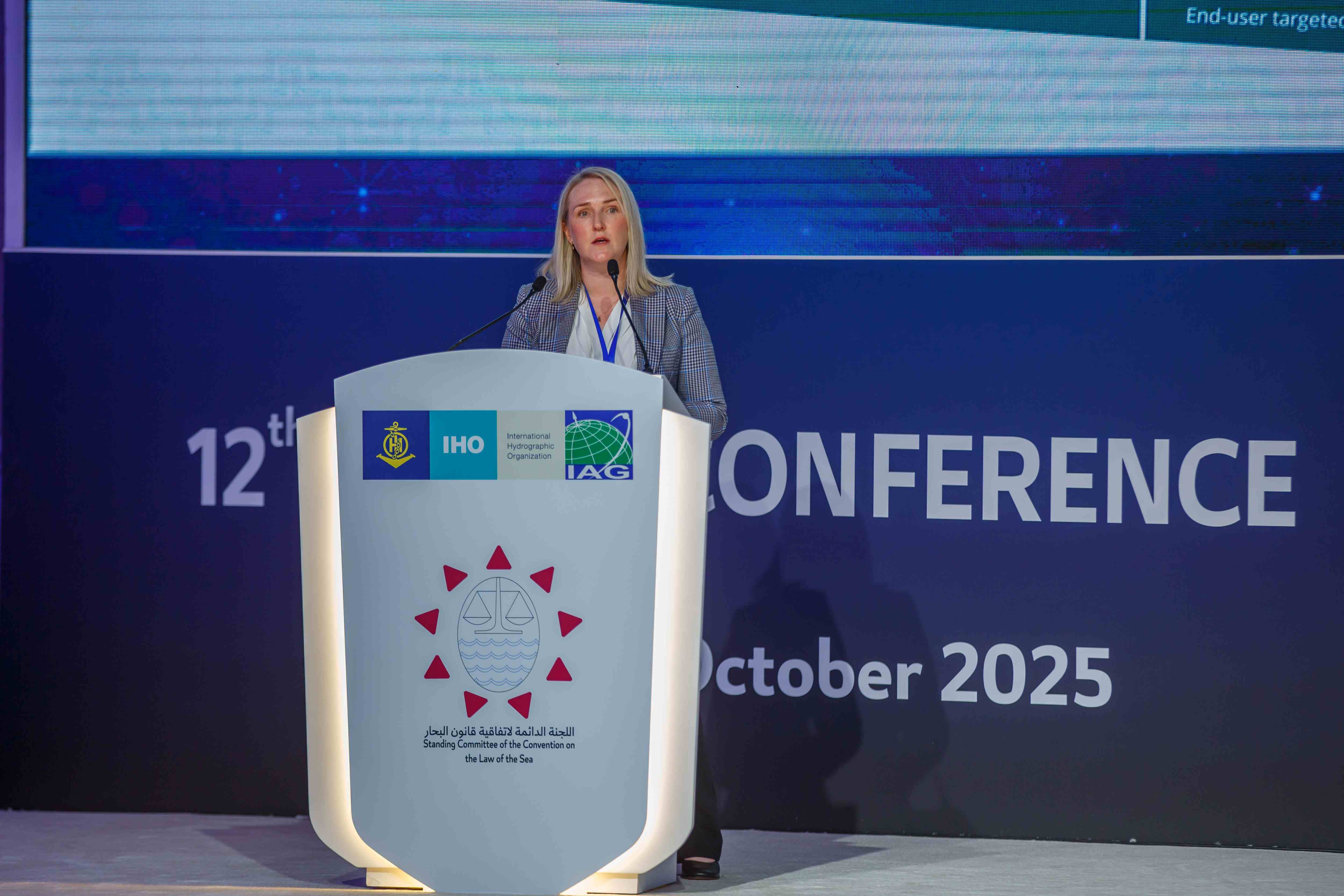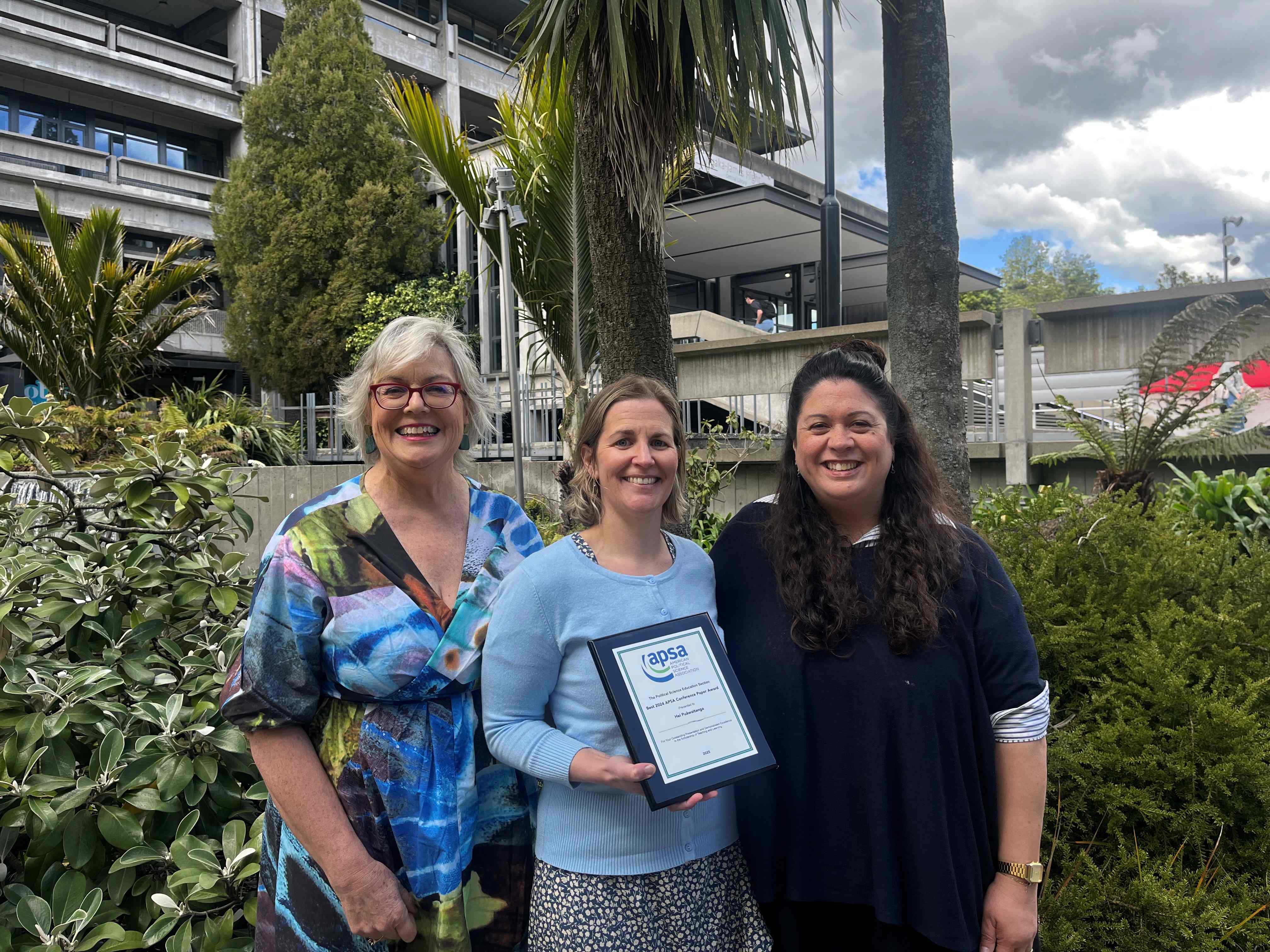UC Civil Engineering PhD student and chartered bridge engineer Sabina Piras (L) is working with Professor Alessandro Palermo (R) and Associate Professor Gabriele Chiaro to develop an alternative earthquake-resilient solution for designing and building bridge infrastructure.
The research is being led by UC Civil Engineering PhD student and chartered bridge engineer Sabina Piras originally from the United States, under the supervision of Professor Alessandro Palermo and Associate Professor Gabriele Chiaro at UC’s College of Engineering. The team has developed an alternative earthquake-resilient solution, also referred to as “low-damage”, for designing and building bridge infrastructure.
Current earthquake design philosophy prevents the collapse of bridge infrastructure as a result of a large-magnitude earthquake, but that does not mean that bridges won’t be significantly damaged, says Professor Palermo. Road closures and repairs can have a significant social and economic impact as seen in the Canterbury and Kaikōura quakes, which brought the affected regions to a standstill and cost the economy millions.
The researchers have developed a solution which, through the combination of self-centring rocking bridge columns, can achieve large displacements with little to no damage compared to conventional bridge columns. A rocking column is comprised of two main structural components: one or multiple high strength bars that act like rubber bands to recentre the column, and several conventional steel bars that are detailed to dissipate energy and can be easily replaced if heavily damaged.
“When an earthquake occurs, the column rocks over the foundation. The joint where the rocking motion happens is designed and detailed such that it can be easily repaired in a very short time,” says Piras. The repair work on the joint could be done over one night closure, preventing major traffic disruption, she says, in comparison to current construction methods that can take months or even years to fix or rebuild.
The 2016 Kaikōura earthquake had a major impact on the transport network with damage, landslides and liquefaction affecting over 900 bridges. After visiting Kaikōura, the researchers understood the need to know how low-damage rocking solutions perform in various soil conditions. “It’s like driving a Ferrari on the road or rough terrain; its performance will not be the same,” says Professor Palermo.
The researchers investigated the influence of different soil types on the low-damage rocking column system and developed a novel and simplified testing technique to simulate this complex problem.
“The soil we build our infrastructure on varies so much throughout New Zealand, and we must understand how additional soil movements in an earthquake influence the rocking behaviour of our columns,” says Piras.
“The majority of New Zealand bridges are built on single, large-diameter piles that, although big and stiff, are still susceptible to movements in an earthquake. Structural bridge researchers have validated the performance of low-damage rocking bridge columns through experimental testing assuming that the foundations are fixed. However, we have recognised that this incorrectly predicts the behaviour of the system, and we are the first to study the influence of soil-foundation-structure interaction on low-damage rocking bridge columns,” she says.
The novelty of the solution stands on its simplicity to build.
“I have worked on several different, low-damage bridge systems and it seems the main barrier to implementation has been the slightly higher cost and risk associated with this novel design. I consider the Wigram-Magdala Link Bridge in Christchurch the Tesla of bridges, and would like to see more of these seismic solutions being implemented,” Professor Palermo says.
The researchers have expanded on past research and application of post-tensioned rocking bridge columns and have developed a cost-effective solution aimed at engineers and constructors to start adopting sooner.


%20resized.jpg)







